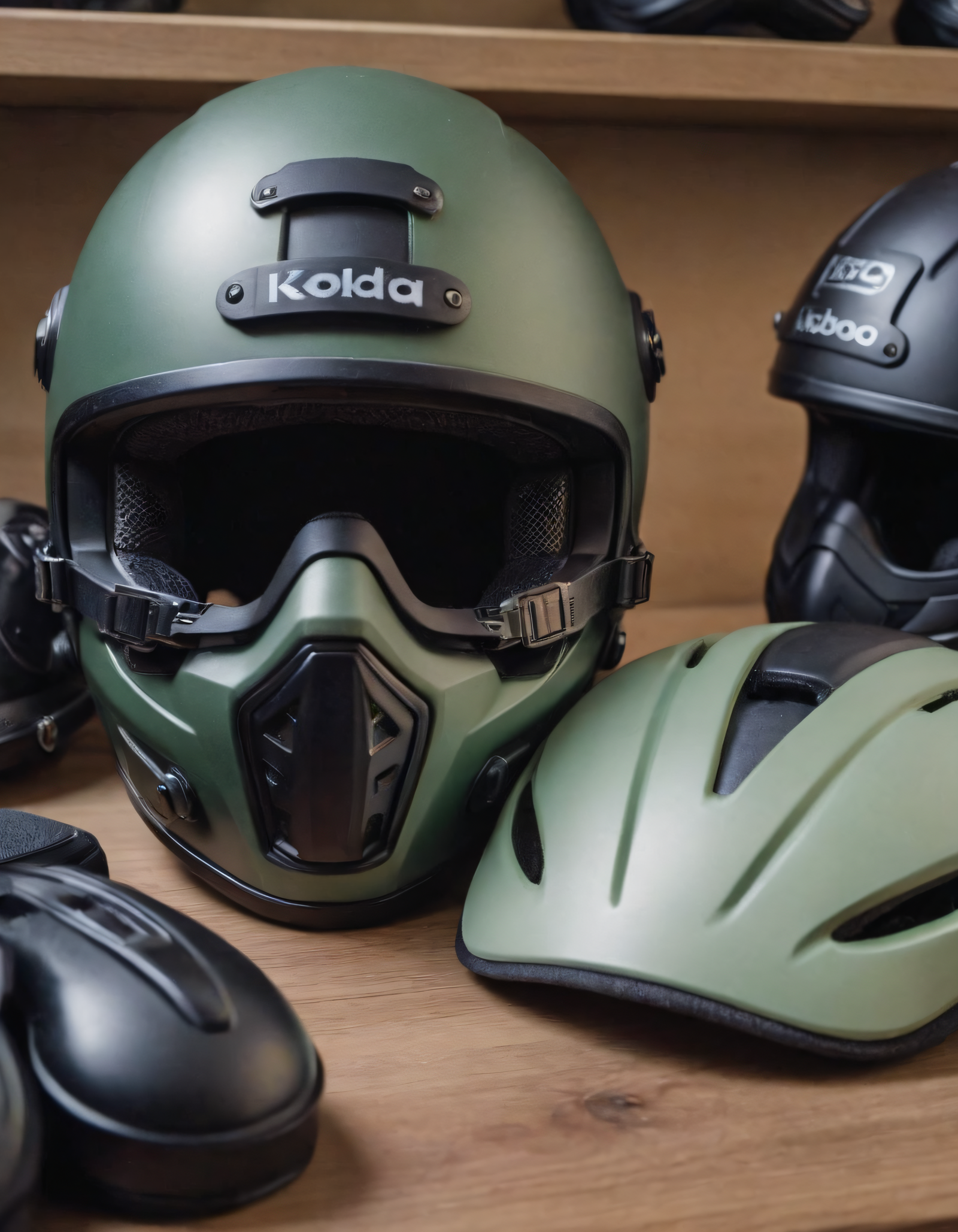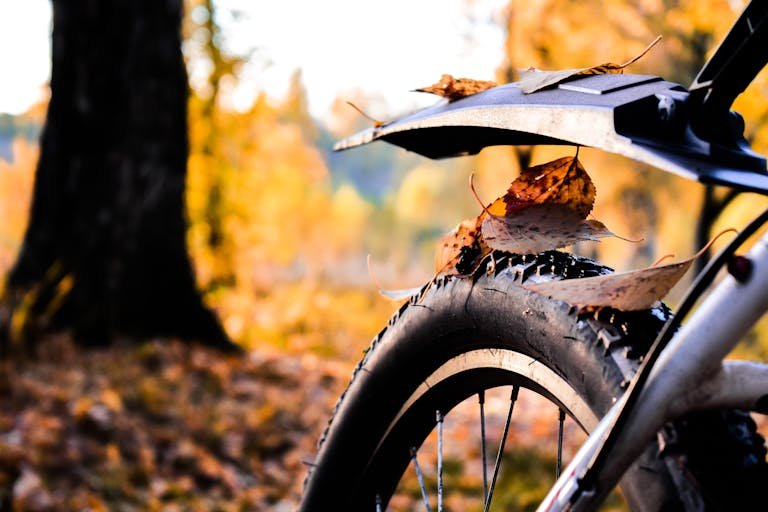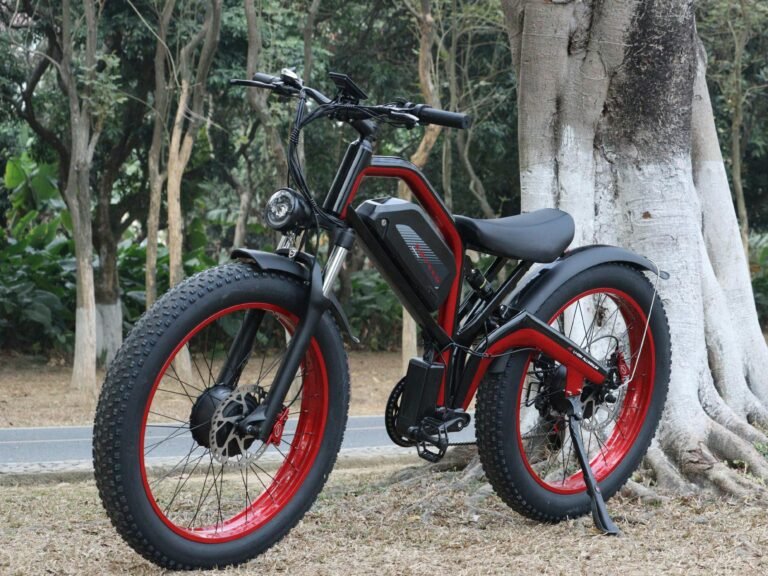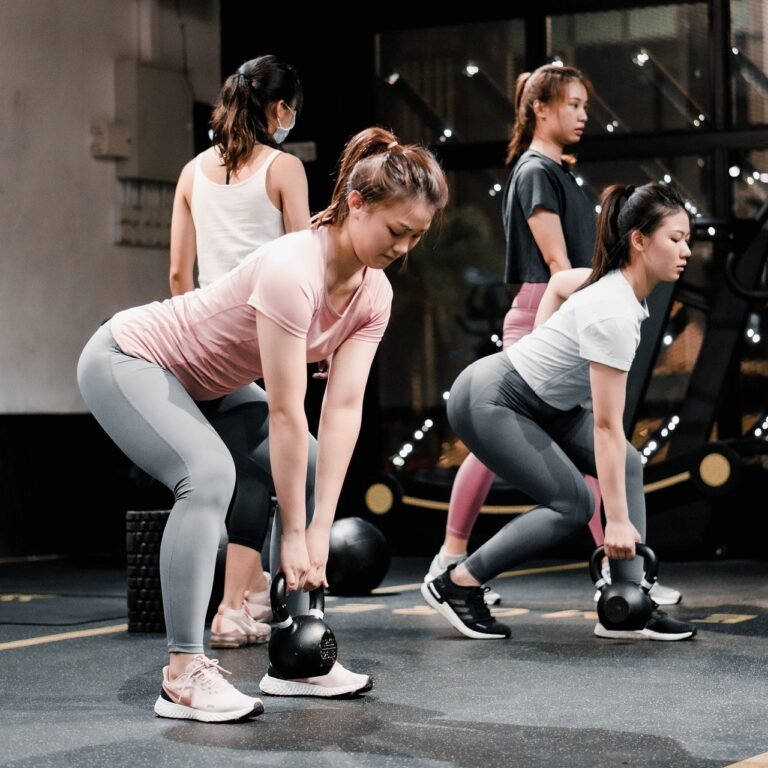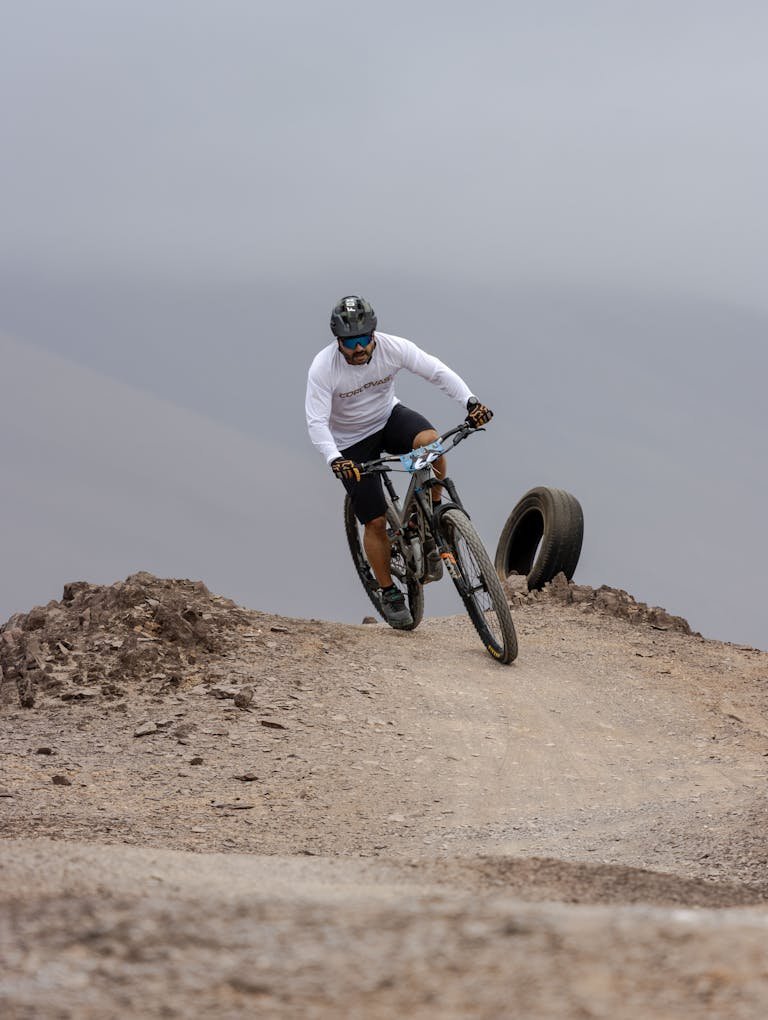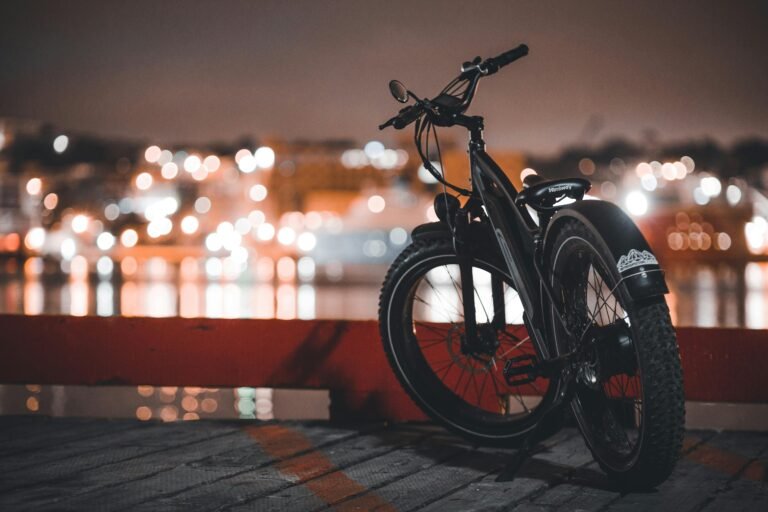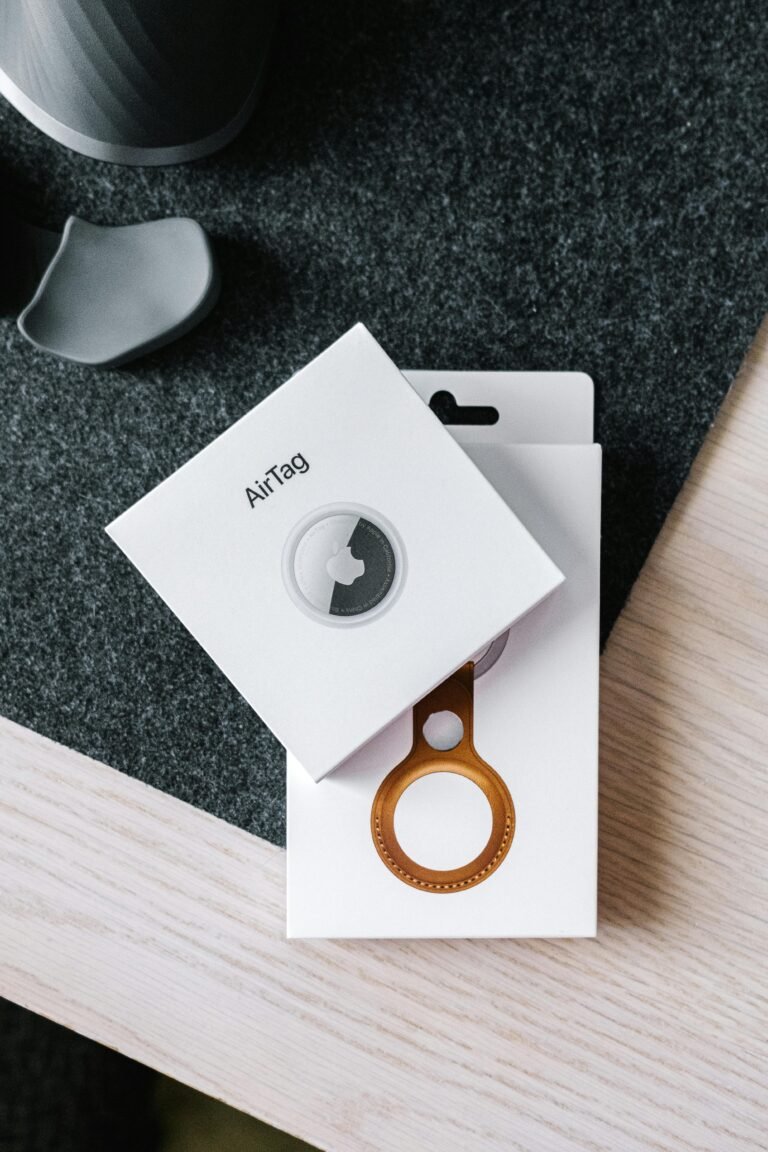Essential Mountain Bike Gear: A Complete Guide for 2024
Did you know that 75% of mountain biking injuries could be prevented with proper protective gear? Whether you’re a weekend warrior or an aspiring downhill champion, having the right mountain bike gear isn’t just about looking professional – it’s about riding safely and confidently! Let’s dive into everything you need to crush those trails!
Essential Protective Gear for Mountain Biking: A Trail-Tested Guide
I still remember the day my basic cycling helmet saved my skull during a nasty fall. That moment taught me that proper protective gear isn’t just a suggestion – it’s an absolute must for mountain biking. Let me share what I’ve learned about keeping safe on the trails without looking like a walking armor suit.
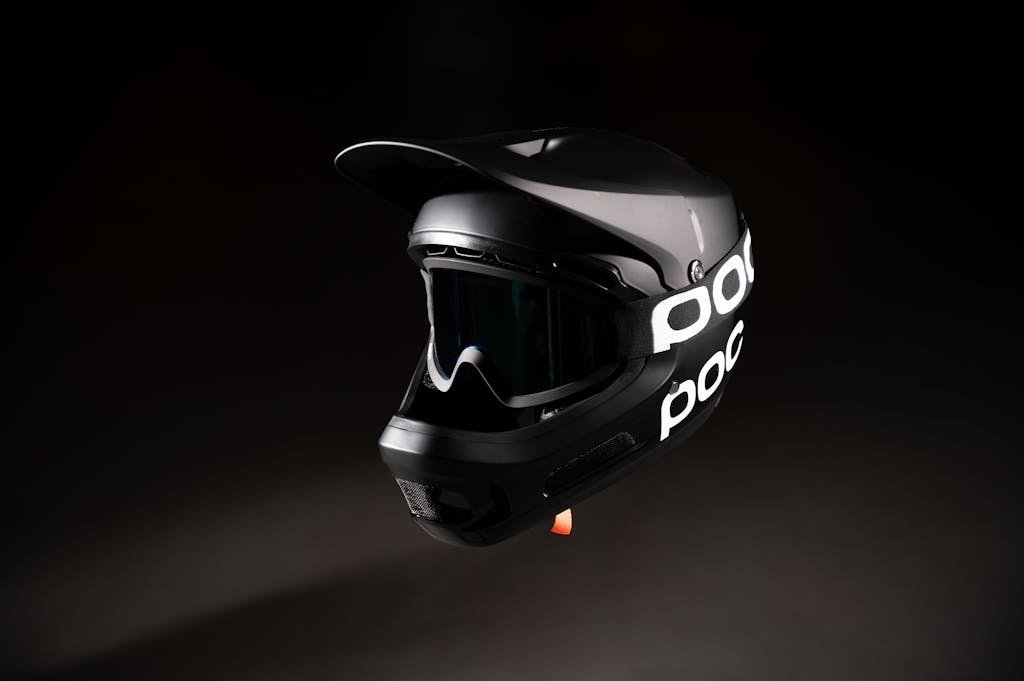
Helmet Choices
For serious trail riding, you’re looking at two main options: full-face or traditional. Full-face helmets are worth every penny if you’re tackling technical descents or jumps. Look for MIPS technology – it’s basically this clever system that helps protect your brain from impacts during crashes. But for regular trail riding, a well-ventilated traditional helmet works great. Just make sure it fits snugly without any pressure points.
Body Protection
After trying everything from minimal to maximum protection, I’ve landed on a sweet spot. A lightweight spine protector paired with a breathable chest plate offers solid protection without turning you into a sweaty mess. D3O padding is amazing stuff – stays soft while riding but hardens on impact. Just remember to check your armor for damage after any significant crashes.
Hands and Eyes
Don’t cheap out on gloves. Good mountain biking gloves need reinforced palms and knuckle protection while maintaining bar feel. For eye protection, I alternate between goggles for wicked rides (better against mud and debris) and sunglasses for mellower trails. Clear lenses for cloudy days are a total game-changer!
Knee and Elbow Protection
Finding the right pads took some trial and error. Those newer soft pads with hardening technology are fantastic – flexible enough for pedaling but firm during impacts. For most trail riding, knee pads are essential while elbow pads are nice to have. Make sure they stay put without restricting movement.
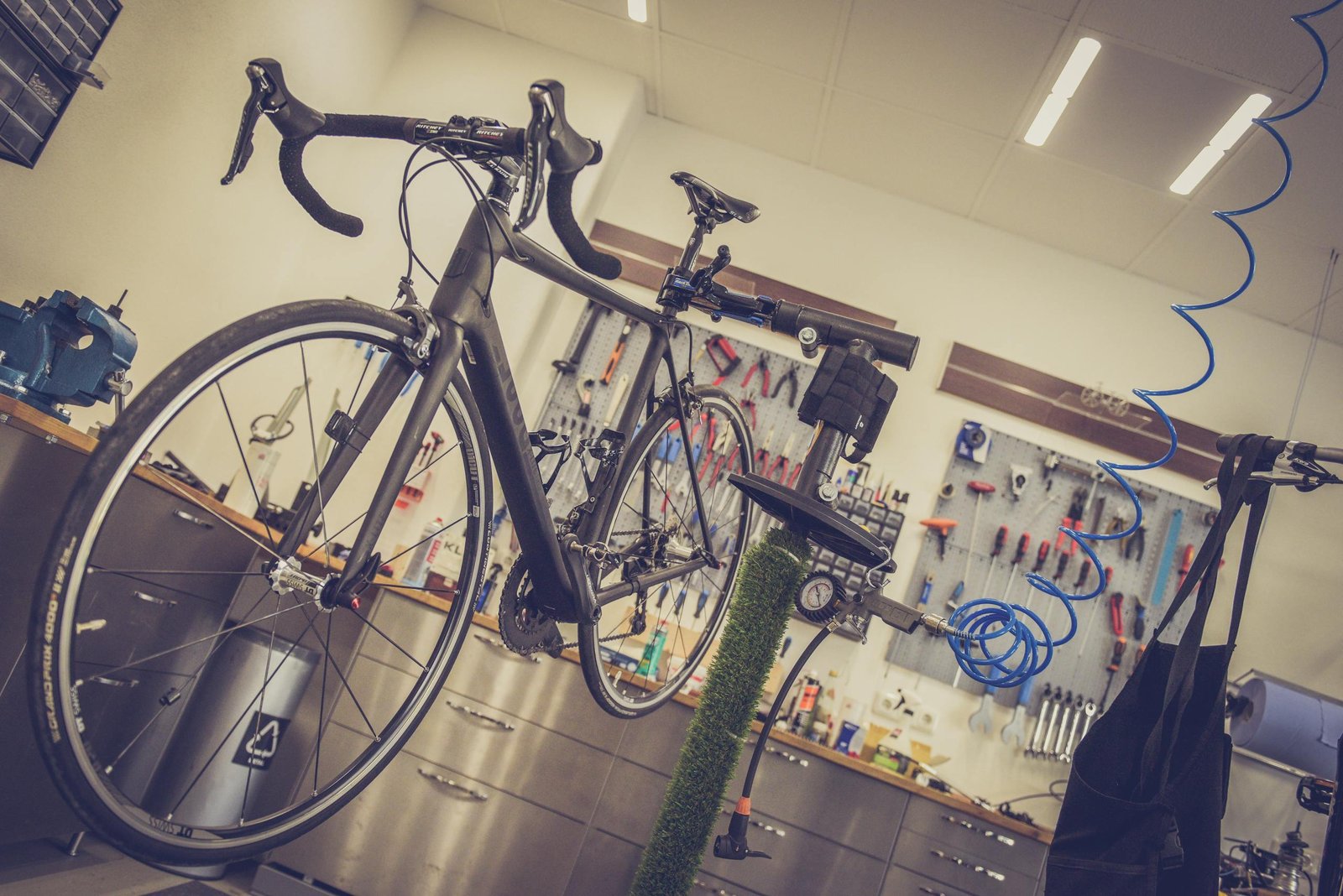
Quick Pre-Ride Checklist
- Check helmet for cracks or damage
- Verify armor padding is properly seated
- Test glove grip areas for wear
- Clean eye protection and check for scratches
- Ensure all pad straps are intact
The best protective setup is one you’ll actually wear consistently. Don’t feel pressured to gear up like you’re heading to a world cup downhill race if you’re just hitting some local flow trails. But never skimp on head protection – your brain is kind of important and worth it!
Pro tip: Keep some basic repair items in your pack – zip ties and athletic tape can save a riding day when gear starts falling apart mid-trail.
Mountain Bike Clothing Must-Haves: What Actually Works on the Trail
You know what’s funny? When I first started mountain biking, I thought my regular gym clothes would work just fine. One soggy, chafed, and thoroughly uncomfortable ride later, I learned that proper mountain biking clothing isn’t just about looking the part – it’s about staying comfortable and performing better. If your just starting out check out my article for beginners.
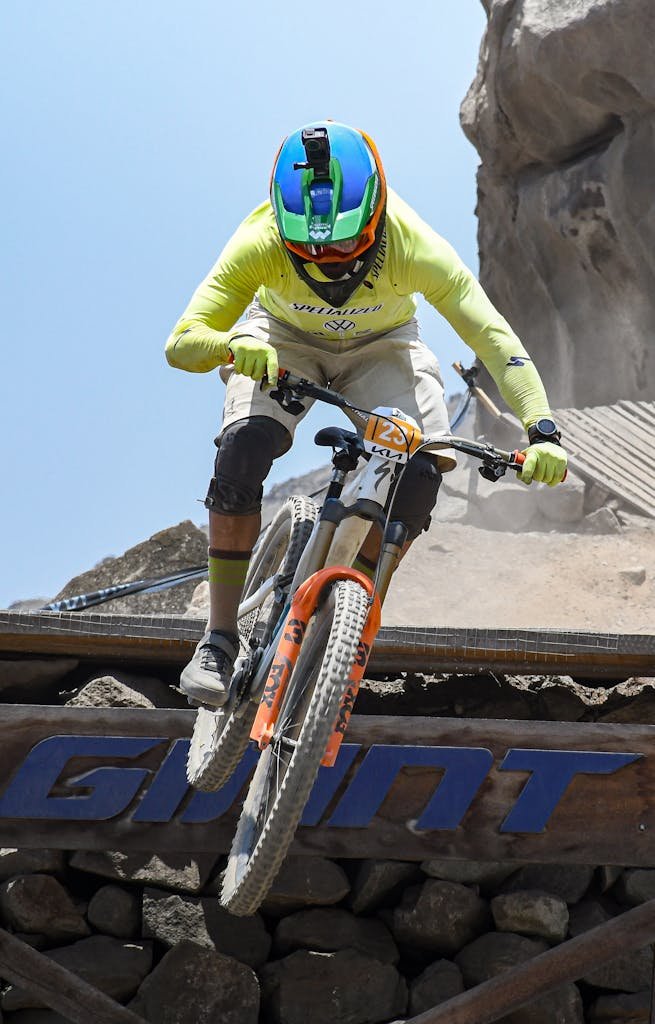
Technical Fabrics Matter
Let’s talk about moisture-wicking materials for a minute. After trying everything from cotton t-shirts (big mistake!) to high-end jerseys, I’ve found that technical synthetic fabrics are worth every penny. They pull sweat away from your skin and dry super quickly, which helps prevent that gross clammy feeling. Merino wool is amazing too, especially for cooler rides, though it costs a bit more. The key is to avoid cotton like the plague – once it gets wet, it stays wet.
The Truth About Padded Shorts
Here’s something nobody talks about enough: that first week of wearing bike shorts can feel pretty weird. But trust me, a good chamois (that’s the pad in your shorts) is the difference between enjoying a 3-hour ride and walking funny for days. I look for shorts with a quality chamois that’s not too bulky. And please, wear them without underwear – that’s how they’re designed! Apply some chamois cream on longer rides to prevent chafing.
Smart Layering
Mountain weather can be super unpredictable. The trick is layering with pieces you can easily stash in a pack. Start with a moisture-wicking base layer, add an insulating mid-layer for cool days, and always pack a lightweight, packable rain jacket. Those convertible zip-off sleeves are actually pretty handy when temperatures swing.
Footwear Facts
The flat vs. clipless pedal debate is huge in mountain biking, but here’s what matters: get shoes specifically designed for your pedal choice. For flat pedals, look for shoes with sticky rubber soles. If you’re going clipless, make sure the shoes are walkable – you’ll definitely end up hiking at some point! If possible, keep both types ready depending on the trail and conditions.
A quick pro tip: Throw an extra pair of socks in your pack. Wet feet can ruin an otherwise perfect ride, and fresh socks midway through can feel like pure luxury.
Trail Tools and Repair Kit Essentials: What You Really Need
Nothing kills a great ride faster than a mechanical issue you can’t fix. I’ve learned the hard way that being prepared isn’t about carrying everything – it’s about having the right stuff and knowing how to use it.
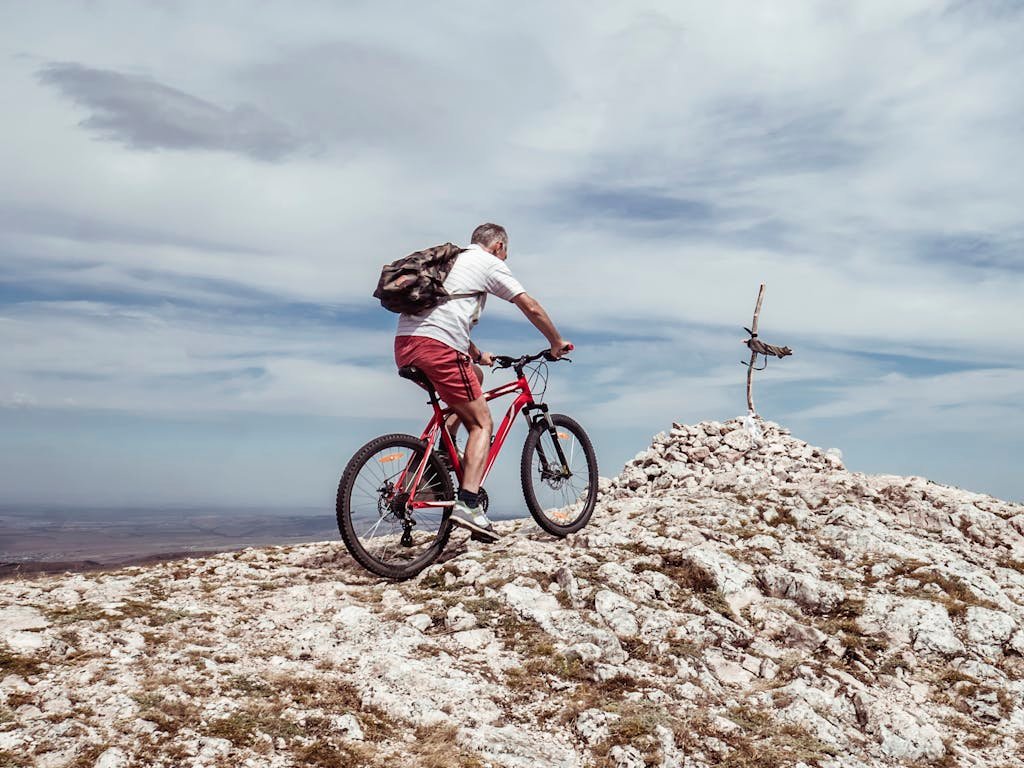
Multi-Tool Must-Haves
The heart of any repair kit is a good multi-tool. Skip those massive 30-function tools – they’re just extra weight. What you actually need is something with 4-6mm Allen keys, a T25 Torx bit, and a chain breaker. Make sure to check all your bike’s bolt sizes before choosing a multi-tool.
Tire Repair Basics
Flat tires are probably the most common trail issue. Always carry two tubes (because flats love company), tire levers, and a reliable mini-pump. If you’re running tubeless, pack a plug kit and a couple of bacon strips.
Pro tip: Check your tire sealant levels monthly.
Quick-Fix Essentials
Some small items that have huge value on the trail: a quick-link for chain repairs, zip-ties (seriously, they fix almost anything temporarily), and a small roll of duct tape wrapped around your pump.
Emergency Tips
Practice repairs at home first. You don’t want your first chain repair to be 10 miles out in fading light. Also, take photos of tricky repairs when your bike’s running well – they make great references when something goes wrong. And always carry a phone with your emergency contact number saved – sometimes the smart choice is calling for help.
Remember, a minimal kit you know how to use beats a full workshop you don’t. Start with these basics, learn to use them well, and add items based on your actual trail experiences.
Hydration and Nutrition Equipment: Lessons from Long Days on the Trail
I learned that carrying water isn’t enough – you need a solid hydration and nutrition system. Let me share what really works after countless rides and plenty of trial and error with different setups.
Hydration Choices Matter
I’ve used both water bottles and hydration packs extensively. Here’s the truth, for rides over 90 minutes, nothing beats a good hydration pack. I load mine with 2-3 liters depending on the weather and terrain.
Water bottles are fine for quick rides, but they get grimy fast and can pop out on rough trails (lost two bottles learning that lesson!).
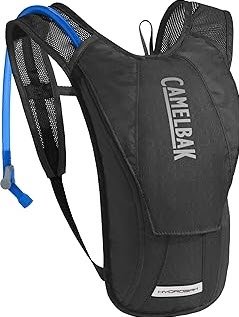
Pro tip: Add a splash of electrolyte mix to your reservoir – it helps prevent that weird plastic taste.
Smart Snack Storage
Finding the right places for quick-access nutrition was a game-changer for me. I modified my pack’s shoulder strap with a small pouch for energy chews – no more stopping just to eat. For longer rides, I pack easy-to-digest snacks in sealed bags to protect them from sweat and rain.
Pack Comfort
Your hydration pack needs to fit like it’s part of you. Look for wide shoulder straps and a waist belt that actually works. I found that a slightly smaller pack that I refill at the car beats carrying a massive reservoir that sloshes around. And those little magnetic clips for your hydration hose? Total game-changer for easy drinking on the move.
Remember, the best system is one you’ll actually use consistently. Start with these basics, then dial in what works for your riding style and local conditions.
Performance-Enhancing Accessories for Cyclists
Cycling is more than just pedaling—it’s about optimizing the experience, whether you’re chasing fitness goals, exploring trails, or commuting. The right accessories don’t just enhance performance; they make every ride more enjoyable and safer. Here are some must-have performance-boosting tools and gadgets every cyclist should consider.
GPS Computers and Tracking Devices
If you’re serious about tracking progress or navigating unfamiliar routes, a GPS computer is a no-brainer. Devices like the Garmin Edge 540 or Wahoo ELEMNT Bolt provide real-time data on speed, distance, and cadence. Many also offer advanced features like route planning, elevation tracking, and even crash alerts.
Bonus tip: Some models include live tracking, which can be a lifesaver if you’re venturing into remote areas.
For those into social cycling, Strava integration lets you share rides and compete on segments.
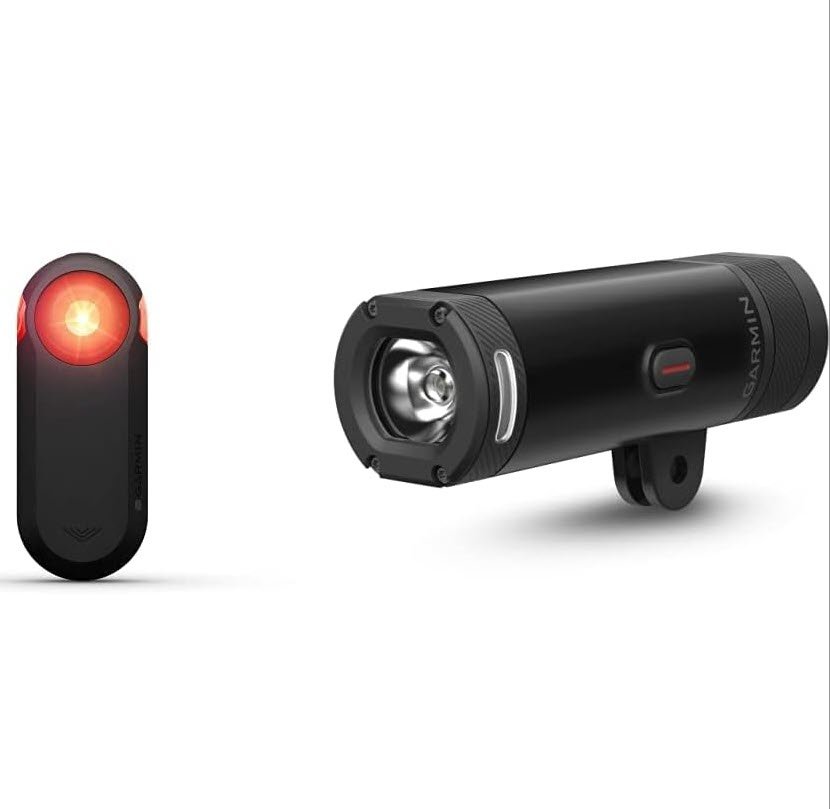
Lighting Systems for Varied Conditions
A proper lighting system isn’t just for night rides. Even during the day, a bright front light, makes you visible to cars, while a rear light with radar, such as the Garmin Varia pictured here, alerts you to approaching vehicles.
Look for lights with adjustable brightness and long battery life. Rechargeable models are a better long-term investment. Waterproofing is a must if you ride in unpredictable weather.
Phone Mounts and Protection
A phone mount is a game changer, whether you’re navigating, streaming music, or just keeping an emergency contact handy. Quad Lock and Rokform make some of the most reliable mounts that hold up even on rough trails.
For added protection, consider mounts that double as shockproof cases. Trust me, you don’t want your phone flying off mid-ride—it’s a recipe for disaster.
Camera Equipment for Trail Documentation
Documenting rides is both fun and functional. Action cameras like the GoPro Hero 12 Black let you capture stunning footage of your adventures and analyze your form.
Pro tip: Use a chest or helmet mount for a more immersive angle, and always bring extra batteries. Image stabilization is essential if you want to avoid nausea-inducing footage.
Bike-Specific Fitness Monitoring Tools
For those who love diving into data, fitness monitors like power meters are a goldmine. The Favero Assioma pedals, for example, measure your power output with impressive accuracy. Pair this with a heart rate monitor to gauge effort and optimize training.
These tools sync with apps like TrainingPeaks or Garmin Connect to provide insights on recovery, cadence, and even VO2 max. If you’re serious about performance, this is the way to train smarter, not harder.
Storage and Transportation Gear for Cyclists
Whether you’re hitting the trails or prepping for a road trip, having the right storage and transportation gear for your bike can make all the difference. Let’s explore some essential options, including a standout product from Thule, the T2 Pro XTR bike rack, which combines convenience and reliability.
Bike-Specific Fitness Monitoring Tools
For those who love diving into data, fitness monitors like power meters are a goldmine. The Favero Assioma pedals, for example, measure your power output with impressive accuracy. Pair this with a heart rate monitor to gauge effort and optimize training.
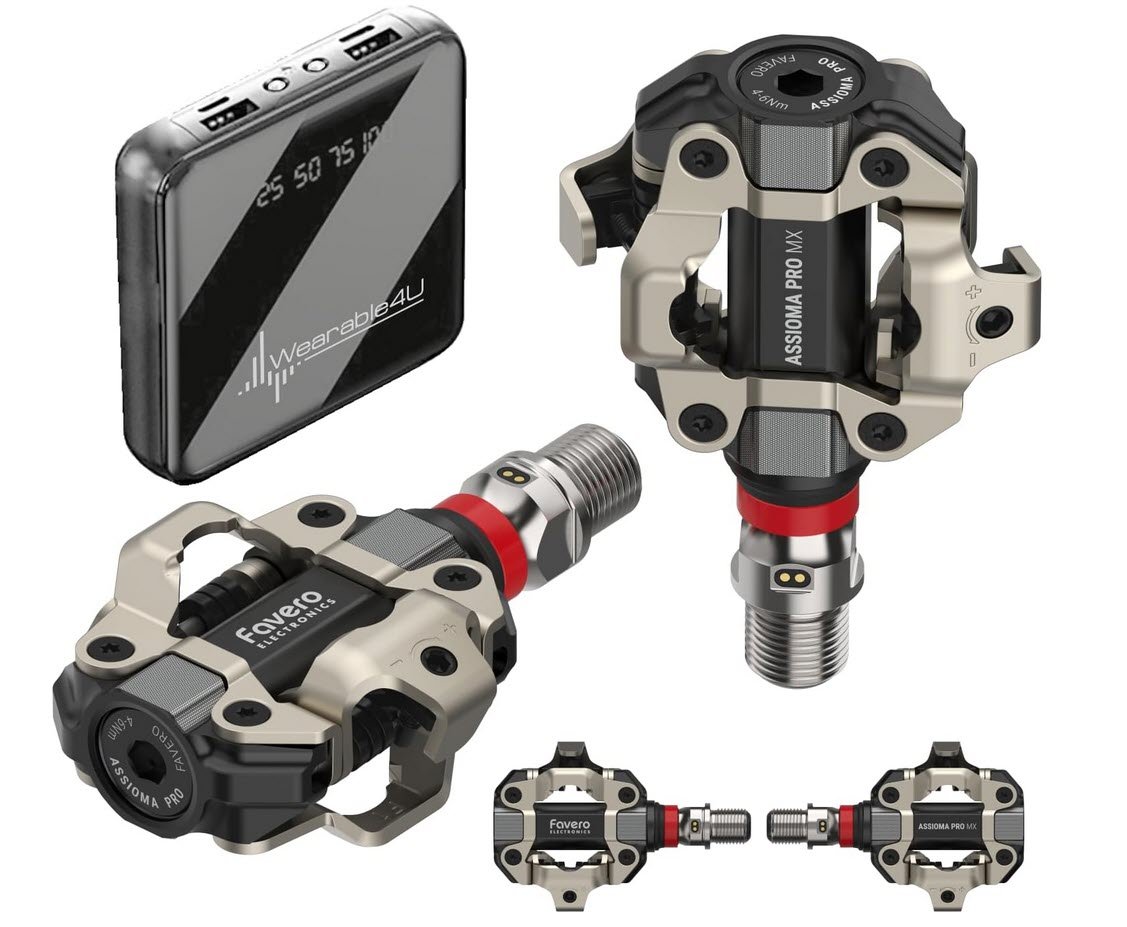
Bike Bags and Protective Covers
When transporting your bike, a quality protective bag is a lifesaver. Look for padded options that shield your bike from scratches and damage, especially during air travel. Brands like Evoc and Thule offer durable solutions with compartments for wheels and tools, ensuring every part stays secure. These bags are perfect for high-end bikes, protecting delicate frames and components. Check out our Bike Box article for more information on this topic.
Trail Pack Organization Systems
A trail pack with efficient storage compartments is crucial for off-road adventures. Look for features like water-resistant zippers, separate hydration sleeves, and quick-access pockets for tools or snacks. Having a well-organized pack can save time and prevent fumbling around for essentials mid-ride.
Bike Racks and Mounting Solutions
The Thule T2 Pro XTR is an excellent choice for cyclists seeking a hitch-mounted bike rack. This rack accommodates two bikes, with the option to expand to four. It’s compatible with tires up to 5 inches wide, making it ideal for fat bikes, mountain bikes, and even some e-bikes.
The rack’s HitchSwitch lever allows for easy folding when not in use and tilts away for vehicle rear access. With a load capacity of 60 lbs per bike, it’s robust and suitable for heavier models. Plus, its integrated cable locks provide added security during transit.
Security Equipment for Bike Storage
Invest in high-quality locks for storing your bike at home or on the go. Wall-mounted anchors and heavy-duty chains are ideal for garages, while lightweight U-locks or folding locks work well for travel. Options like Kryptonite’s smart locks offer app-based monitoring, adding a tech-savvy layer of protection.

Quick-Access Storage Solutions
For rides requiring easy access to essentials, handlebar bags or saddle pouches are great additions. They can store items like multi-tools, energy gels, and phones without adding much bulk. Ensure they have secure closures and are water-resistant to withstand sudden weather changes.
Why Choose the Thule T2 Pro XTR?
Thule has a reputation for durable and innovative products, and the T2 Pro XTR lives up to the hype. Its ease of installation with the AutoAttach system and compatibility with various bike sizes make it extremely versatile.
Additionally, the rack’s integrated wheels allow for easy maneuverability, even when off the vehicle. It’s an investment, priced at around $800, but its durability and convenience justify the cost for avid cyclists.
Wrapping Up
In summary, investing in reliable storage and transportation gear, ensures your bike stays secure and ready for an adventure, whether you’re heading to the mountains or cruising through the city.
Performance-enhancing accessories aren’t just extras—they’re investments in a better cycling experience. Whether you’re starting with lights and phone mounts or diving into GPS computers and power meters, these tools can make your rides more enjoyable, safer, and productive.
Remember, building your mountain bike gear collection doesn’t happen overnight! Start with the essential protective equipment and gradually add performance-enhancing accessories as your skills and needs evolve.
Your safety should always come first, followed by comfort and performance. Your perfect gear setup is waiting. See you on the singletrack! Choose wisely, and ride on! 🚴♂️
Find More Resources on Bicycles
- Smart Bike Trainers: 2024 Best Picks with Features and Benefits
- Mountain Biking for Beginners: Essential Guide to Hit the Trails in 2024
- 3 Best Mountain Bikes of 2024: Complete Buyer’s Guide & Reviews
- Bicycle Chain Maintenance: 2025 How to Clean and Lube Guide
- Essential Mountain Bike Gear: A Complete Guide for 2024

